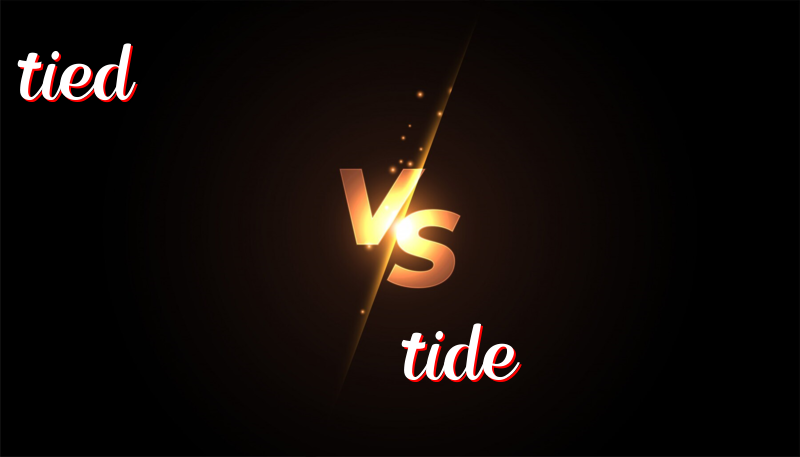英語單詞Tied 與 Tide的區別
October 25, 2024
單詞「Tied」與「Tide」之差異
在學習英語時,可能會遇到許多形似而意不同的單詞,如「Tied」和「Tide」。這兩個詞看似相似,但意思和用法卻大不相同。本文將詳細闡述這兩個單詞的歷史、用法及如何記住它們的區別。
詞源歷史
- Tied: 「Tied」是動詞「Tie」的過去式和過去分詞,意味著綁住或捆住。這個詞源自古英語「tīgan」,意指綁縛。
- Tide: 「Tide」作為名詞,意指潮汐或潮流,來自古英語「tīd」,意味著時間或季節,後來發展為與海洋潮汐相關的詞彙。
用法
Tied用於描述某人或某物被綁住、約束或固定。
- The sailor tied the boat to the dock.
船員把船繫在碼頭上。 - She tied her hair back before working out.
她在運動前把頭髮綁起來。 - The score was tied at the end of the game.
比賽結束時比分持平。 - He tied the box with a strong rope.
他用結實的繩子捆住了盒子。 - The two teams are tied for first place.
這兩支隊伍並列第一名。
Tide通常用來談論海洋的潮汐,也可以指趨勢或潮流。
- The tide is high at noon.
中午時潮水最高。 - They went out to collect shells at low tide.
他們在低潮時出門撿貝殼。 - The economic tide is shifting towards sustainable energy.
經濟潮流正朝向可持續能源發展。 - The tide of public opinion is turning against the policy.
民意潮流開始反對這項政策。 - The fisherman must understand the tides to succeed.
漁夫必須了解潮汐才能成功。
記憶小技巧
要記住這兩個單詞之間的區別,可以聯想「Tied」與「Tie」(綁)的緊密關係,總能想到具體知識如繩子。而「Tide」,可聯想「海潮(Tide)」隨著水位上下波動的自然現象。
總結
「Tied」主要用於表示某物被綁住或限制,而「Tide」主要指潮汐或趨勢的變化。通過理解這兩個單詞的詞源、用法及聯想記憶法,我們能更容易正確使用它們。在學習過程中,記得多加練習和應用是關鍵。

Leave a Reply
You must be logged in to post a comment.